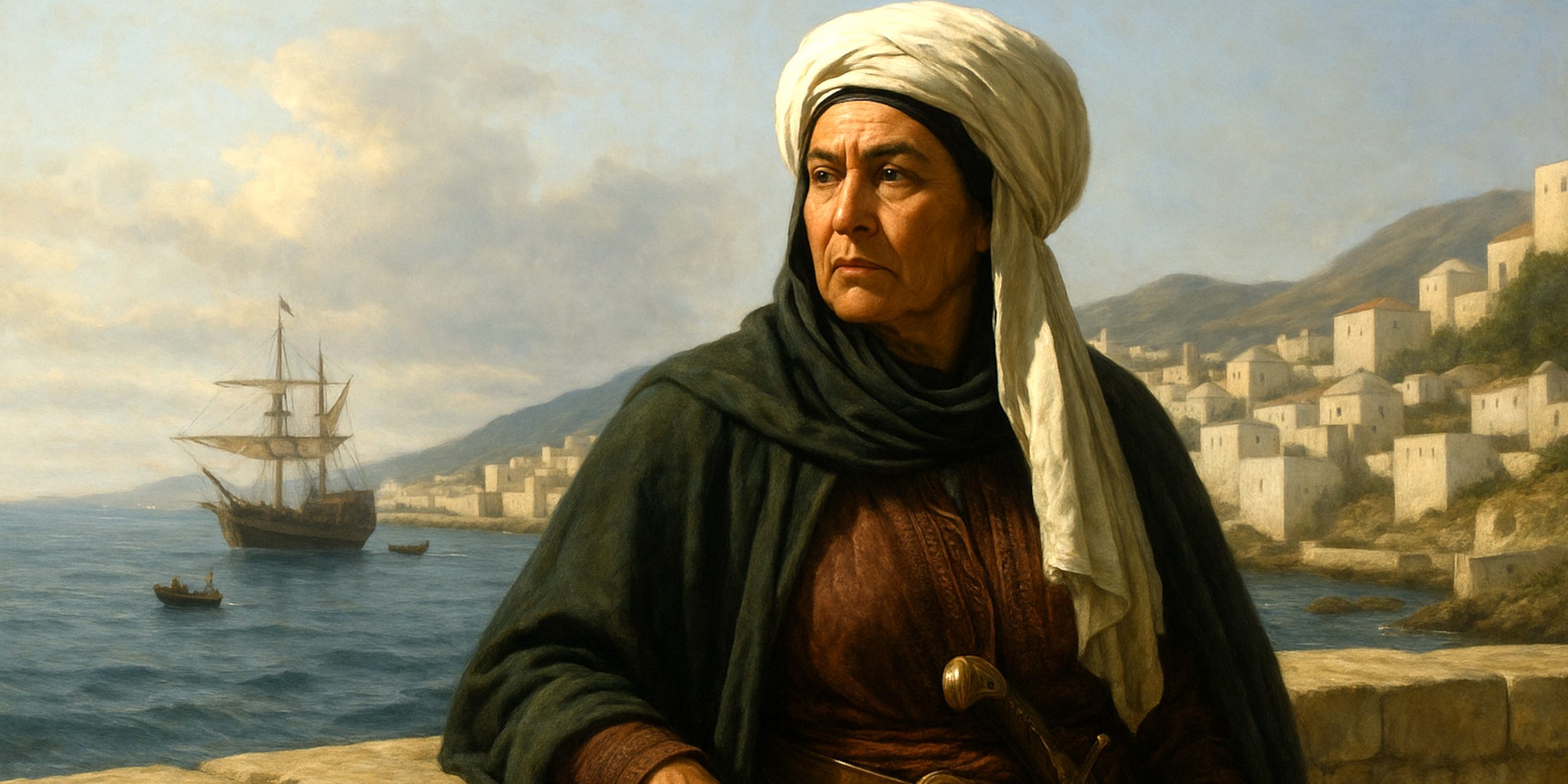
Sayyida al-Hurra is one of those figures who slipped through the net of popular history yet left her mark on every shore she touched. A Moroccan noblewoman turned pirate commander, she ruled Tétouan with enough authority to be called “al-Hurra,” meaning “The Free Woman,” a title that conveyed both respect and defiance. Her story unfolds across the early sixteenth century, when European crowns were busy carving each other up and the Mediterranean was a theatre of vengeance.
Origins and Early Life
Sayyida al-Hurra was born Lalla Aisha bint Ali ibn Rashid al-Alami around 1485 in Granada, just before the fall of Muslim rule in Iberia. Her family fled the Reconquista, joining the exodus of Andalusian Muslims who sought refuge in North Africa. They settled in Chefchaouen, in northern Morocco, where her father founded a small but influential city-state.
Educated in languages, politics and religion, she married Abu Hassan al-Mandari, the ruler of Tétouan. When he died, she took command not as a mere consort but as sovereign. Chroniclers describe her as intelligent, calculating and fiercely independent. To the Portuguese, she was a nuisance. To her people, she was the embodiment of resistance.
The Pirate Queen of Tétouan
By the 1520s, Tétouan had become a fortified haven for corsairs. Sayyida al-Hurra allied herself with the Ottoman privateer Hayreddin Barbarossa, sharing intelligence, ships and plunder from captured Christian vessels. It was less piracy than political reprisal, a calculated response to the forced expulsion of her people from Spain.
Her fleets targeted Iberian shipping lines and coastal settlements. Portuguese records describe her as “a woman who commands the sea like a king,” a statement made with both awe and irritation. Captains cursed her flag as their ships were boarded and their crews ransomed off the coast of Gibraltar.
Weapons and Ships
Her corsair fleet operated from the harbours of Tétouan and occasionally from Algiers. Ships were mainly xebecs and galleys, fast and shallow-drafted, perfect for striking and retreating before larger European vessels could react.
Weapons included:
- Naval artillery: small bronze cannons mounted on the decks.
- Bladed arms: scimitars and yataghans favoured for close-quarters combat.
- Boarding weapons: pikes, boarding axes and matchlock muskets for intimidation as much as efficiency.
Her men were a mix of exiled Andalusians, Berbers, and Ottoman-trained corsairs, each loyal more to gold and vengeance than to any flag.
Bounty and Treasure
The Mediterranean in her era was a floating economy of captives, cargo and ransom. Sayyida al-Hurra’s fleets made their fortune from captured goods and hostages, especially European nobles whose families would pay handsomely for release. Some contemporary Spanish records accuse her of holding entire coastal towns to ransom.
Much of the plunder funded Tétouan’s expansion, from fortifications to trade infrastructure. The city’s prosperity under her rule was built quite literally on other people’s misfortune.
Battles and Power
The sea battles she commanded were not grand fleet engagements but fast, brutal strikes. Her corsairs raided Gibraltar and the Iberian coast repeatedly between 1529 and 1536, hitting targets faster than royal fleets could respond. She was part of the broader Ottoman-aligned strategy that disrupted Spanish and Portuguese dominance in the western Mediterranean.
Her most famous engagement was off the coast of Marbella, where her fleet captured multiple merchant ships in one swoop. A Portuguese chronicler complained that “no man could trade from Lisbon to Ceuta without fear of the Lady of Tétouan.”
Contemporary Quotes
Most contemporary accounts come from hostile European sources. They rarely mention her by name, only by her title, “al-Hurra,” as if even they acknowledged her rank.
- A Portuguese report described her as “a woman of high lineage and sharper mind than many a king.”
- An anonymous Spanish captive later wrote that “she spoke softly, but each word carried the weight of command.”
- A Moroccan chronicler, Ibn al-Qadi, called her “the ruler who feared none but God.”
These glimpses, filtered through admiration and resentment, suggest a leader both political and personal in her mastery.
Her Marriage to the Sultan
In 1541, Sayyida al-Hurra married Ahmad al-Wattasi, the Sultan of Morocco. Remarkably, he travelled to Tétouan for the ceremony rather than summoning her to Fez, an extraordinary gesture of respect. She retained her authority in Tétouan after the marriage, which was political more than romantic, sealing alliances between regional powers.
Her continued independence irritated rivals at court. Eventually, her son-in-law seized control of Tétouan in a coup, ending her rule.
Fate and Legacy
After her deposition, Sayyida al-Hurra disappears from the historical record. Some sources claim she retired quietly to Chefchaouen, living out her days surrounded by the mountains that had sheltered her youth. Others whisper that she never stopped commanding from the shadows, advising corsair captains until her death in the 1560s.
Her legacy survives less in artefacts than in memory. She remains the last woman in Islamic history to hold the title of al-Hurra and the only female ruler in the annals of Mediterranean piracy. In Moroccan folklore, she is remembered not as a pirate but as a queen wronged by empire and redeemed by the sea.
Reflection
As a historian, I find her story a rare case of power worn without apology. She ruled men who made their living through danger, negotiated with empires, and wielded both religion and rebellion as weapons. When European chroniclers call her “the pirate queen,” they are trying to make sense of a woman who refused to fit the mould they had drawn for power.
Her life reads less like legend and more like a challenge to the boundaries of history itself. She reminds us that some crowns are forged not from gold, but from salt and smoke.
Watch the documentary:



